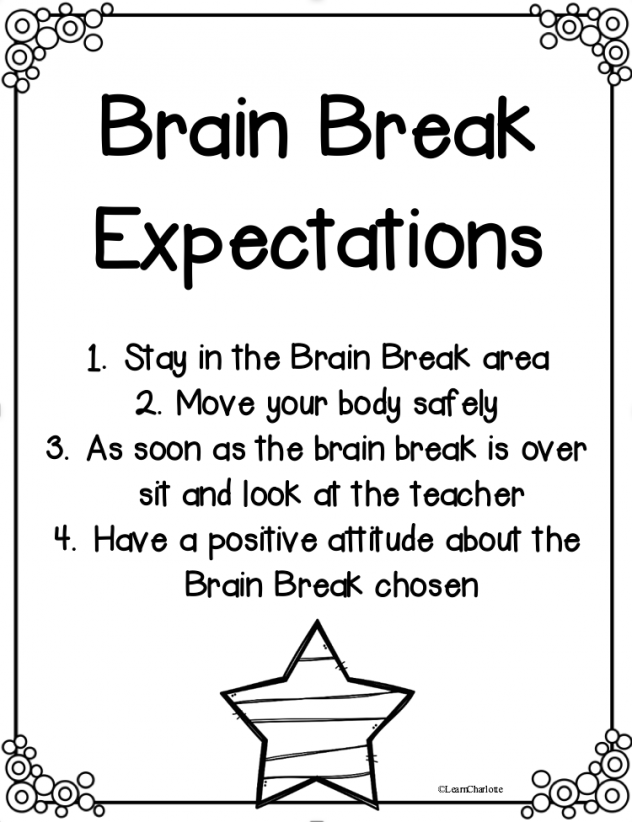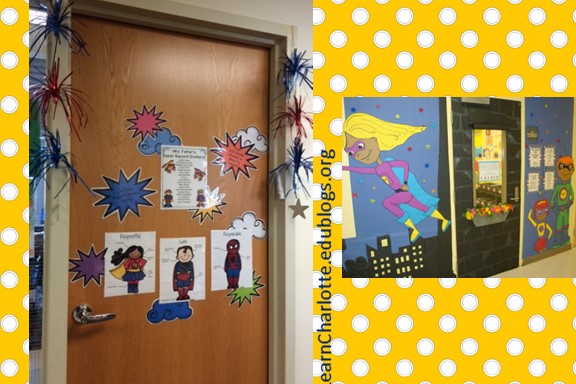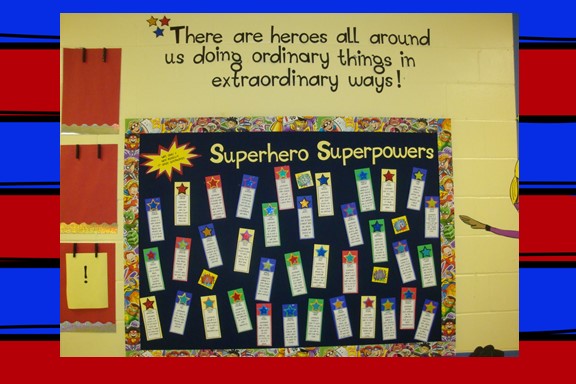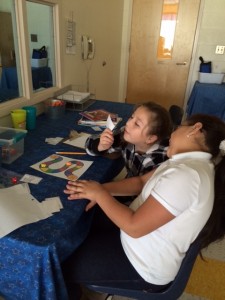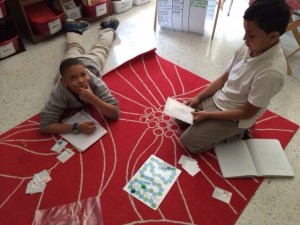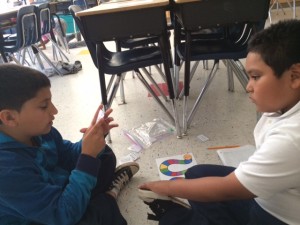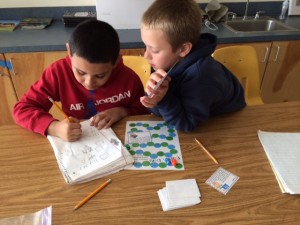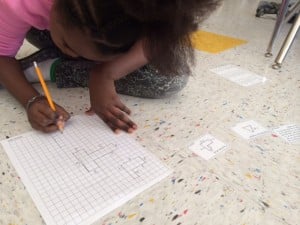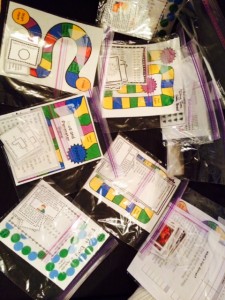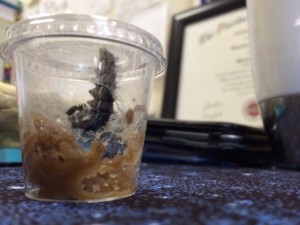The best decision I made last school year was to stop giving out incentives for good behavior, and start giving out brain breaks. I know, I’m pretty late to this party. I’d actually had parents write me notes-“Please, if you don’t mind, can you not give Kaylee any candy? Please?” These notes broke my heart! I try to make healthy choices at home. I run, I do yoga, I buy my dog this crazy expensive dog food that you have to drive to the vet to get and they close at 1 o’clock on Wednesdays, but here I was not reinforcing these healthy choices at school.
(See super expensive food eating dog above.)
So, ok no candy, no more. Easy! But I have been hooked on giving out incentives my whole teaching career! What can I do now? Brain Breaks!
What are these Brain Breaks?
About every 45 minutes, my students take a break from what they are doing and wiggle, laugh, breathe deeply, stretch, yell, jump, or sing! We started small and simple at the beginning of the year with games like “follow the leader” where I’d walk around the classroom like an airplane, then a frog. We sang some silly songs and made up dance moves. I keep a list on the wall by our smart board of our “Brain Break Leaders” (you get to add your name to the bottom of the list for making an awesome choice- our one incentive!) I’d pick a brain break leader and let them teach us their Tae Kwan Do moves (carefully!) Or we’d use any of the awesome videos on Gonoodle.com.
How does this help classroom management?
Sitting still is not a natural state for children, especially younger ones like my second graders. The knowledge that they were going to get a break soon and a chance to wiggle and be silly keeps them focused just a bit longer. But you have to be consistent and you can’t keep telling them, “We’ll take a break in 5 minutes.” My students knew when brain breaks were coming and sometimes we had to stop what we were doing to take this opportunity to refocus.
But There Isn’t Enough Time and They’ll Just Lose Control!
There’s really no wrong way to hold a brain break as long as you set very clear expectations before hand. Picture what would happen if you asked children to stretch (by far the least scary of the things on my list above) without giving any directions first. “Ok let’s all stretch our arms wide and breathe deeply… whoa! Whoa! Hands in your bubble! Sarah you ok?! ALRIGHT hands back down! Hands back down!”
On the very first day of school, I rolled out the brain break expectations.
- You must stay in the brain break area (which is a big, safe area of our classroom.)
- You must move your body with enough control that no one gets hurt.
- As soon as the brain break is over I will say our class quiet signal and that’s your cue to sit down right where you are and put your eyes on me (now they’re ready to listen!)
- No begging for certain brain breaks and no whining about which brain break we’re doing!
Get a FREE brain break expectations poster here!
That last rule is the headache saver! You can do so many different types of brain breaks, including the amazing videos at Gonoodle.com, but if everyone is jumping in your face yelling, “Disco Brain! Disco Brain!” then brain breaks are going to be too much of a disruption and you won’t want to do them.
At the beginning of the year, each time we come to our front carpet to do a brain break, we go quickly through these 4 expectations. Any of my students can tell you these rules- especially if they get to say them in a funny voice. “Who can tell me our brain break expectations like Cookie Monster?”
The truly hard part is enforcing those four expectations every time. Every time. Even when Alice’s mom, who is also the music teacher, walks in and it’s Alice who is disco dancing so violently that Kendra gets poked in the eye. If students aren’t following our brain break rules I say very calmly, “I’m sorry Alice, but you’re not moving safely, so you need to sit in your seat.” With most groups of students, you’ll only have to do this every once in awhile to show that these expectations are important.
Why are Brain Breaks so Great?
Here are the results I found after a year of having my students take brain breaks every 45 minutes:
- We got more done!
I was not constantly having to ask for students to listen or stay focused. When I saw that a lot of the students were having trouble paying attention, we took our brain break earlier and I got them all back on task! Sometimes I even made a smaller lesson into a brain break between bigger lessons! For example, when we were studying how to make words plural by adding “s” or “es”, I wrote a bunch of nouns on index cards. I split the class into teams and had them line up in two lines and run back and forth to buckets labeled “s” and “es.” I stood in the back of the room handing out new cards and each child got to run at least twice. Then we all sat around the buckets to see if we had sorted the words correctly.
“Uh oh, dish ended up in the “s” bucket! Where should it be?”
“The “es” bucket! Dishes!”
- We were calmer, happier, and more focused!
The students loved taking brain breaks and therefore worked hard to earn that privilege! Taking these breaks also gave students the chance to get their wiggles out, be loud, jump, etc! All the things that kids love AND NEED to do.
- No one missed earning candy, prizes, or gold stars!
Occasionally, a student would ask me, “Why don’t we get lollipops like Mrs. H’s class?” All I had to say was, “Because our class is so well behaved that we get to take brain breaks!” I also had parents thank me for adding exercise into our day!
- I had more energy and focus too!
I like to participate in the brain breaks with my students. They think it is hilarious to watch me learn the dances or be a rocket ship and when the break is over I get their focus back right away (and stronger than before!) Getting up and moving around every 45 minutes is good for the teacher too! More energy = more patience! Plus you can get more steps on your Fitbit… but really it’s for the kids.
If you haven’t tried using brain breaks in your classroom, then I highly recommend it! If you tried it last year and it didn’t work, then try it again with clear expectations from the first day of school. It is a fun and healthy way to enhance your students’ focus and encourage good choices. Message me here with questions or email me at LearnCharlotte@gmail.com


